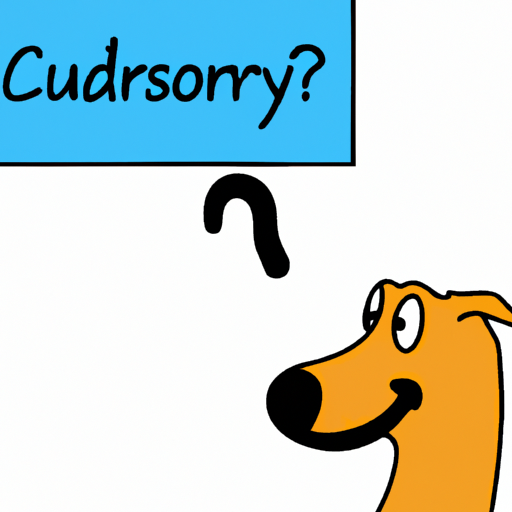An Introduction to Canine Behavior
Understanding why your dog exhibits certain behaviors can be a fascinating journey. When your furry friend reaches out and gently places their paw on your face, you may wonder what’s going through their mind. Is it a sign of affection, a plea for attention, or something else entirely? Let’s dive into the world of canine behavior and find out.
The Language of Dogs
Dogs, like humans, use a range of communication methods to express their feelings and needs. This includes vocalizations like barking or whining, body language, and tactile cues.
- Vocalizations: Dogs use sounds to communicate with both humans and other animals.
- Body Language: This can include everything from the position of a dog’s ears and tail to their overall posture.
- Tactile Cues: Dogs use touch to communicate, too. This can be through nuzzling, licking, or placing a paw on you.
When your dog places their paw on your face, it’s their way of getting your attention and expressing a specific need or desire. But what exactly are they trying to say?
Possible Explanations for This Behavior
There are several reasons why your dog might be reaching out to touch your face. Here are a few possibilities:
-
Seeking Attention: This is one of the most common reasons. Your dog might be trying to get your attention because they’re bored, they want to play, or they’re hungry.
-
Showing Affection: Dogs can be very affectionate animals, and they often use touch to express their love and affection.
-
Expressing Anxiety: If your dog is feeling anxious or stressed, they might reach out to you for comfort.
-
Asserting Dominance: In some cases, a dog might place their paw on your face to assert their dominance. This is more common in dogs with behavioral issues.
Here’s a table summarizing these possibilities for quick reference:
| Behavior | Possible Meaning |
|---|---|
| Seeking Attention | Boredom, desire to play, hunger. |
| Showing Affection | Expressing love and affection. |
| Expressing Anxiety | Seeking comfort during stress. |
| Asserting Dominance | Asserting authority, more common in dogs with behavioral issues. |
How to Respond to This Behavior
Now that you understand why your dog might be placing their paw on your face, let’s talk about how you should respond.
-
Seeking Attention: Engage your dog in play, feed them if it’s time for their meal, or provide them with a toy to alleviate boredom.
-
Showing Affection: Respond with affection of your own. A gentle pat or a loving hug can be a great response.
-
Expressing Anxiety: Comfort your dog and try to remove or alleviate the source of their anxiety, if possible.
-
Asserting Dominance: This behavior should not be encouraged. Seek help from a professional dog trainer if necessary.
Frequently Asked Questions (FAQs)
Q: Can a dog pawing at your face be a sign of aggression?
A: While it’s possible, it’s usually not the case. If your dog is showing other signs of aggression, consult a professional.
Q: Is it okay to let my dog touch my face?
A: As long as you’re comfortable with it and it’s not a sign of dominance, it’s generally okay.
Q: How can I get my dog to stop pawing at my face?
A: You can gently discourage the behavior by not giving them the attention they seek when they do it. Over time, they should stop.
Understanding your dog’s behavior can help you build a stronger bond with them. By paying attention to their signals and responding appropriately, you can ensure your furry friend feels loved and understood.



